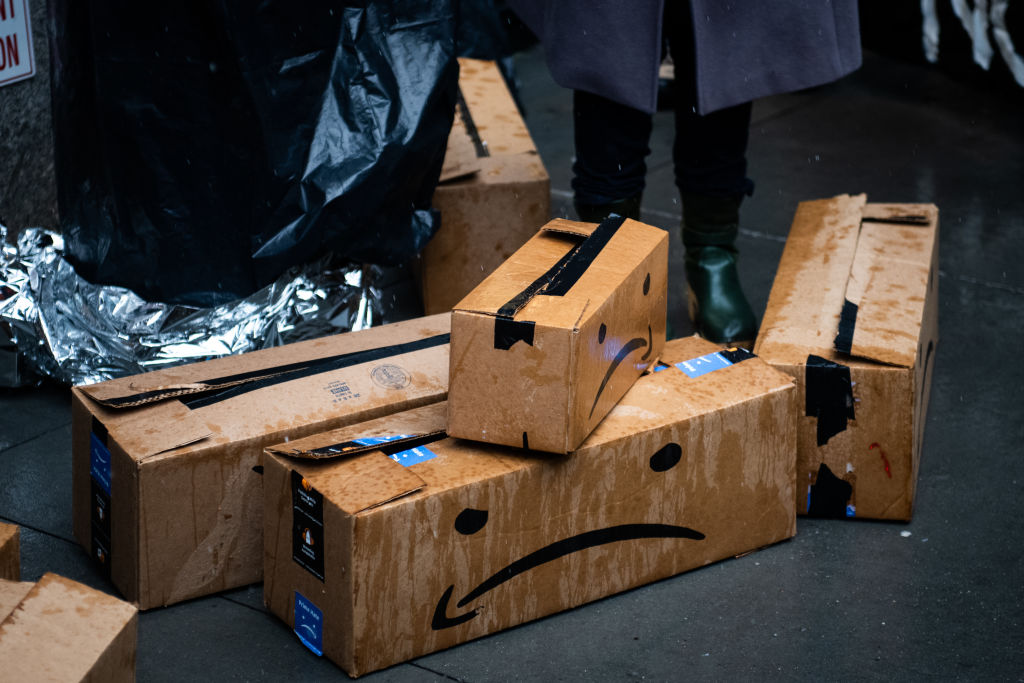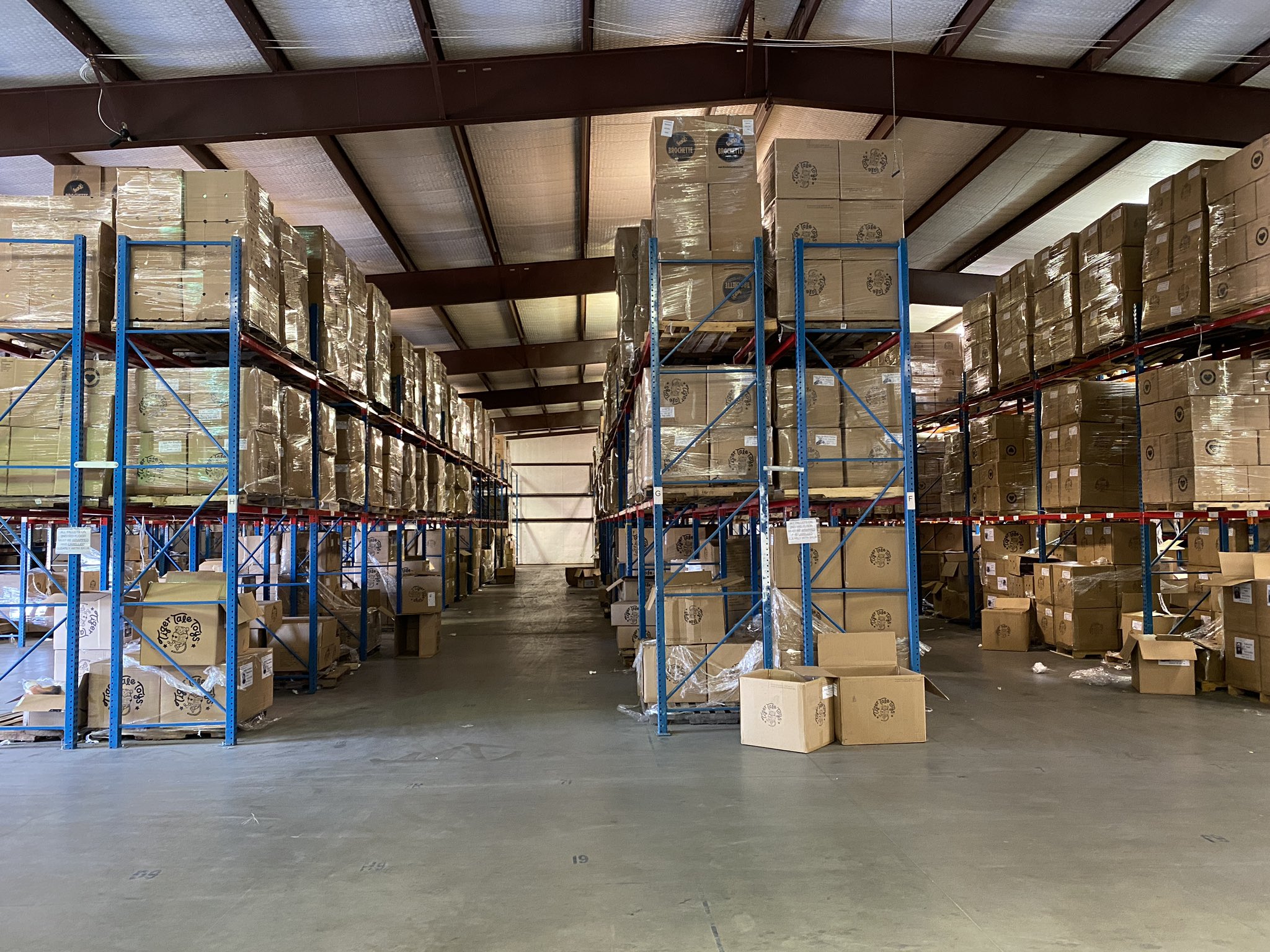
These are independent reviews of the products mentioned, but TIME receives a commission when purchases are made through affiliate links at no additional cost to the purchaser.
At the beginning of the pandemic, when people were shut inside indefinitely and shopping constantly, e-commerce seemed unstoppable.
Brick-and-mortar stores were filing for bankruptcy after bankruptcy, and waves of analysts predicted that consumers would completely change how they shopped, moving permanently online.
People like Mike Beckham, who sell products on Amazon, prepared for that change by ordering containers full of inventory—stainless steel drinkware, in his case—from Asia, to ensure he would have something for customers to buy.
But the pandemic-driven e-commerce boom has slowed, and that’s causing a lot of pain for the companies—big and small—that could not have predicted that the end would come so soon. Now, as Amazon’s Prime Day—the two-day bonanza where sellers like Beckham offer big deals—approaches, those incorrect predictions mean that a lot of these companies selling you stuff are actually losing money on the deal.
Read More: The Surprising Thing That Could Help Ease Inflation
“I feel like I’m on the front lines of retail Armageddon,” says Beckham, CEO of the company Simple Modern. “Mid-2020 to 2021 was the easiest time to be in e-commerce because there was just so much demand, and such a captive audience. From mid-2021 to now is probably the toughest year I’ve ever seen.”
The slowdown is affecting Amazon, too. Last quarter, Amazon experienced its slowest quarter of revenue growth in 21 years, and its share price is down 32% year to date. The company spent big to double its warehouse space over the past two years just in time for demand to slow. But Amazon has a slew of other money-making businesses, including Amazon Web Services, meaning it can afford to lose money in its e-commerce business. The third-party sellers like Beckham who make up nearly two-thirds of Amazon sales don’t have that luxury.
“They’re all victims of increased expectations based on what happened in the pandemic,” says Andrew Lipsman, principal analyst covering retail and e-commerce at Insider Intelligence. E-commerce sales jumped a whopping 36% from 2019 to 2020, and then grew 18% the next year, according to Insider Intelligence. In 2022, Lipsman predicts they will grow slower than 10% for the first time in years.
It would be one thing if consumer demand were just slowing. That’s something all retailers have to face. But Amazon sellers are facing an influx of costs. That’s partly because the e-commerce giant raised fees in January, February, and April of this year, and then in May added an extra fee for items that had been sitting around too long in warehouses.
It’s also because 2020 made e-commerce seem like such a sure bet that more than 200,000 new sellers from around the world joined Amazon in 2020, a 45% increase from 2019.
All those new sellers drove up advertising rates, since they were competing for limited spots. And they competed for customers, trying to offer the lowest prices even as their costs rose.
“Sellers are increasingly feeling the squeeze from all ends, given the heightened competition in the marketplace, rising ad costs, rising input costs, and a softening e-commerce market,” Lipsman says.
Typically, retailers figure out how much stuff to order based on how much shoppers bought in previous years and the trends of the previous few quarters. But the pandemic changed shopping so abruptly that “you’re pretty much flying blind,” says Beckham. “No one had any idea what to expect. Nobody has any sense of how long we’re in this alternative universe—it’s not just COVID, but also that people are buying different things than they did.”
The pandemic-induced retail bonanza also contributed to the transportation nightmares that clogged shipping lanes and idled trucks at ports. Third-party sellers and big retailers like Target and Walmart who ordered more and more to satiate consumer demand couldn’t get it to the U.S. fast enough. Scared of missing what they were sure would be a lucrative holiday season in 2021, they paid tens of thousands of dollars to get their products to warehouses on time.
But then, of course, consumer demand started to slow, as inflation took a bigger bite out of Americans’ paychecks. Retail sales actually fell in December of 2021, which is unusual for the holiday season.
As a result, Amazon sellers were left with warehouses full of products no one wanted. “At one point we had too many jars of [the toy] Brain Flakes that we just had pallets and pallets literally in our office against the wall,” says Mike Molson Hart, the CEO of Viahart, which sells toys on Amazon. “We had kickboards stacked up three, four pallets high.”
The excess inventory is one of the biggest problems Amazon sellers are dealing with right now, since storing stuff that consumers don’t want is prohibitively expensive. Getting rid of goods often means forking over more money to Amazon, to pay for advertising or influencer marketing.
Read More: Why Is Everything More Expensive Right Now? Let This Stuffed Giraffe Explain
KeaBabies, which sells baby products online, ran out of inventory in May of 2020, and dramatically upped its orders to compensate, says Ivan Ong, the company’s co-founder. Now, KeaBabies is overstocked on everything, incurring $300,000 in extra storage fees in the fourth quarter of last year. Warehousing in Los Angeles, where its products are stored, is about $40 a pallet, so the company is paying to move its stock to Las Vegas, where storage costs are lower. The company also ended up paying a liquidator to get rid of some products.
KeaBabies is running sales on Prime Day to get rid of some of its extra stuff, but that can be a losing proposition for many companies. Molson Hart, the Viahart owner, says that increased costs this year mean that Prime Day deals wouldn’t be profitable for him. For instance, he has a year and a half supply of a game called Goodminton, but has already lowered the price to $10.99 from $12.99 per unit, even as Viahart’s costs went up about 30%. In 2020, Molson Hart made $4 gross profit for each Goodminton set; this year, he is making 84 cents, before expenses.

“Our margins are getting compressed, we’re making less and less money, and so if we want to use Prime Day to clear that stock, we basically have to lose money,” he says.
Molson Hart predicts a lot of third-party sellers will go out of business, or quit Amazon altogether.
That could lead to a worse shopping experience on Amazon, says Lipsman, the retail analyst. Without as much competition between sellers, shoppers may see higher prices, more advertising, and fewer products in stock.
“I’ve personally done some searches where the sponsor results have misdirected me towards products that did not have the features that I wanted,” Lipsman says. “The consumer experience, in some respects, has degraded.””
It doesn’t help sellers that Amazon has raised fees as its own sales slowed. In its most recent earnings call, chief financial officer Brian Olavsky said the company was passing on more costs to third-party sellers to offset inflation.
Amazon increased the fulfillment fees it charges sellers in January. It raised storage fees in February. In April, it added a 5% fuel and inflation surcharge. And beginning in May, it introduced an “aged inventory surcharge” that adds costs for products that have been in warehouses for 271 days to a year.
The fuel and inflation surcharge is temporary, the company said in a statement provided to TIME, and the other increases are just a part of Amazon’s annual fee changes. Amazon says it is launching more programs to help sellers succeed, and that fulfillment by Amazon is still 70% cheaper than other services offering two-day delivery.
Still, the last six months have made some Amazon sellers question their future on the site. Brandon Young, who sells toys on Amazon and who also runs a class helping people sell goods on the site, says he thinks Amazon sellers are going to have a hard time competing with brick and mortar retailers like Walmart on cheaper goods. At the beginning of this year, Amazon changed the way it charges for shipping, so that light but bulky items cost significantly more. A toy bucket that used to cost $3.54 to ship now costs twice that, he says. So he’s had to raise prices. A bucket he sold for $11 now goes for $18, when it would go for $5 at Walmart. As a result, his sales on these types of products are down 80%. And it’s not just buckets.
“I can come up with a number of products that are significantly down or dead compared to retail,” he says.
(Amazon says it made the change to be consistent with industry standards, and that it affects a small number of products.)
Pessimistic about short-term prospects on Amazon, sellers like Young are starting to go back into retail stores. Young, who says 99% of his sales are on Amazon, says it’s risky to depend so much on one site. So he’s reaching out to hundreds of small brick-and-mortar stores across the country. He’s also keeping his eye on the trend of live-streaming e-commerce, where Internet celebrities host a sales event and, in China, have sold billions of dollars worth of goods. That, not Amazon, may be the future of e-commerce, he believes.
Read More: Andy Jassy on Figuring Out What’s Next for Amazon
It may be hard for shoppers to imagine Amazon being replaced by anything, much less brick-and-mortar stores or Internet celebrities. But new trends in retail aren’t always easy to predict. A little more than two decades ago, Amazon’s business model was met with skepticism by some. The financial publication Barron’s ran a cover story headlined Amazon.BOMB at the time that proclaimed “the idea that Amazon founder and then CEO Jeff Bezos pioneered a new business paradigm is silly.” That not only proved to be wrong but also shows how hard it is to know how anyone will shop two decades from now, which companies will rise and fall, and how many containers full of stainless steel drinkware any company should order at any given time.
More Must-Reads From TIME
- What Student Photojournalists Saw at the Campus Protests
- How Far Trump Would Go
- Why Maternity Care Is Underpaid
- Saving Seconds Is Better Than Hours
- Welcome to the Golden Age of Ryan Gosling
- Scientists Are Finding Out Just How Toxic Your Stuff Is
- The 100 Most Influential People of 2024
- Want Weekly Recs on What to Watch, Read, and More? Sign Up for Worth Your Time
Contact us at letters@time.com